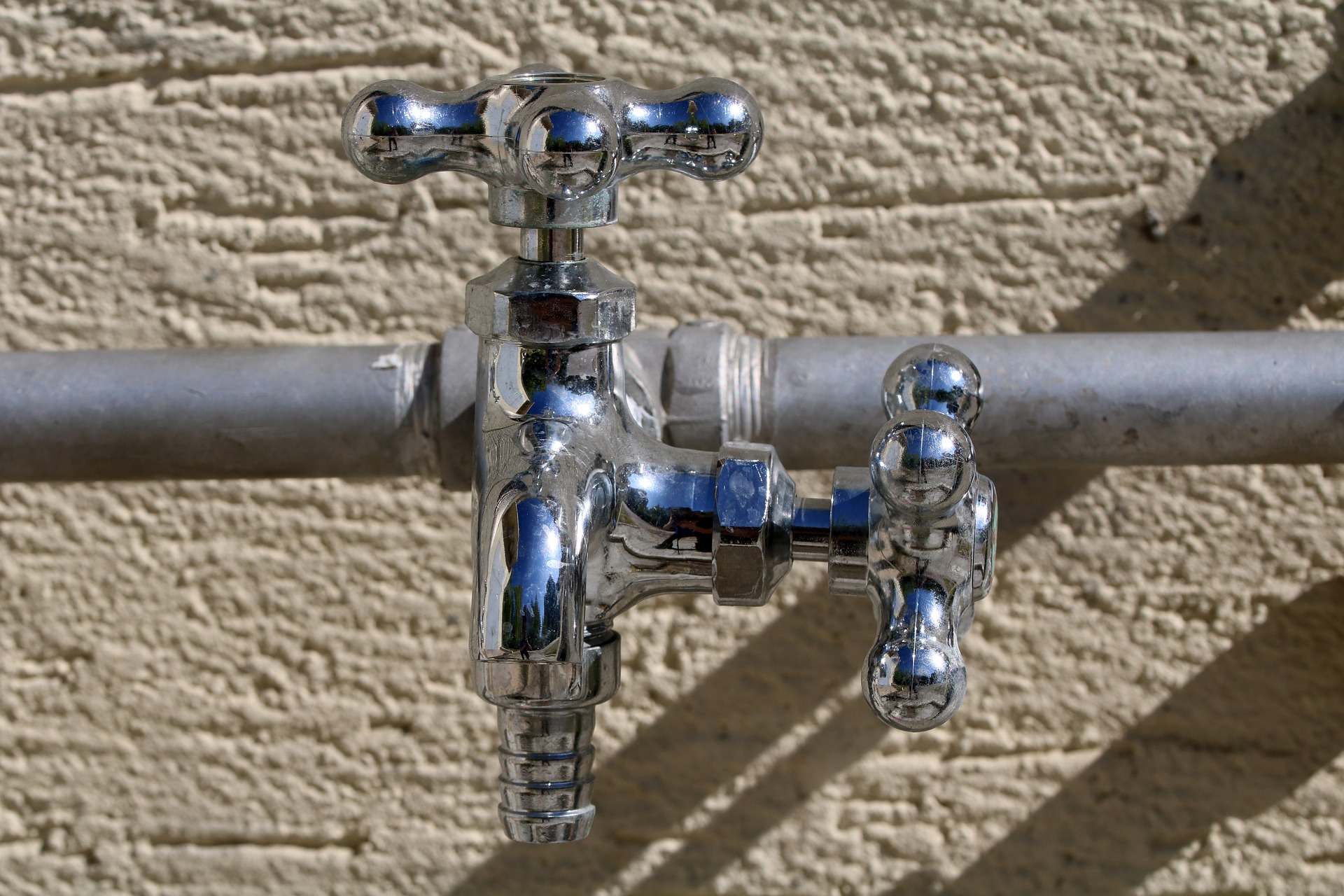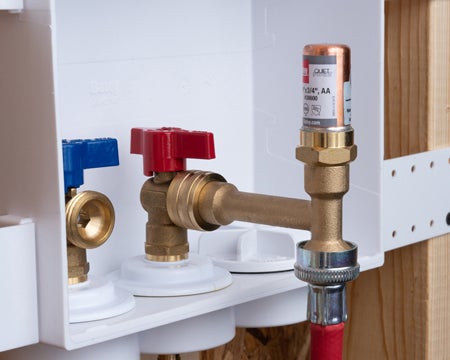We've noticed the article relating to How to Fix Water Hammer directly below on the net and accepted it made sense to share it with you on this page.

Intro
Have you ever before switched off a tap and heard a loud bang or knocking audio coming from your pipelines? That disturbing sound, commonly called an unexpected thud or clunk, is referred to as water hammer. It's not simply an irritating peculiarity of older homes-- water hammer can occur anywhere, and if left untreated, it can lead to even more significant plumbing troubles. In this write-up, we'll debunk water hammer, explore its causes, and talk about sensible means to take care of and prevent it. Think about it as your ultimate guide to subjugating those rowdy pipelines once and for all.
Unexpected Shutoff Closure
Quickly shutting down a tap or appliance can produce a sudden water circulation stop. Dishwashers and washing devices, which have automated shutoffs, are often offenders in producing these unanticipated quits.
Inappropriate Pipeline Sizing
Pipelines that are as well tiny for the amount of water streaming through them can increase the chance of water hammer. Restricted room implies higher velocity, and greater rate implies more powerful stress rises.
High Water Pressure
Too much water stress not just drainages and money but also enhances the results of water hammer. The even more force behind the circulation, the more challenging it strikes when compelled to quit.
Why is Water Hammer a Trouble?
You might wonder, "Is water hammer simply a sound issue?" It's more than that. While the sound can be irritating, the genuine trouble lies beneath the surface area.
The Scientific Research Behind Water Hammer
Water hammer is essentially about kinetic energy. When water relocates with pipes, it lugs energy. If something interrupts that motion-- like a shutoff closing as well swiftly-- this energy changes into a pressure surge. Pipes, installations, and shutoffs experience this spike in pressure, commonly resulting in that banging sound you fear.
Typical Reasons For Water Hammer
Understanding the origin of water hammer is the first step to fixing it.
What is Water Hammer?
Water hammer is a shockwave of pressure that happens within your pipes when water circulation quits or alters instructions quickly. Picture a group of joggers dashing down a slim corridor, only to have a door slam shut at the end. The abrupt stop creates a chain reaction, causing an accident of bodies. In your pipes system, water acts like those joggers, and when it's forced to quit all of a sudden, it creates pressure waves that take a trip via the pipelines.
Noisy Pipes and Household Disturbances
The most noticeable problem is the noise. Hearing beats and bangs each time you do washing or run the dishwasher can disrupt the peace in your house. It may not look like a big deal initially, but over time, it can endure your nerves.
Potential Damages to Pipes System
Water hammer places tension on shutoffs, joints, and fittings. Repeated stress surges can compromise connections, cause leaks, or even result in pipe ruptureds-- a pricey and inconvenient circumstance nobody wishes to encounter.
Long-Term Wear and Tear
Over time, persistent water hammer can cause more constant repair work, early wear on elements, and a reduced lifespan for your plumbing system. Think of it as small stress and anxiety building up right into a larger issue.
Identifying Water Hammer in Your Home
Before you can take care of a problem, you require to validate it exists. So, exactly how do you know if you're dealing with water hammer?
Telltale Signs and Seems
Listen for knocking or battering noises when switching off taps or running appliances. If the noise appears ahead from within the wall surfaces, there's a good chance water hammer is to blame.
Performing a Straightforward Assessment
Try turning taps on and off at different rates. If you notice the noise just accompanies certain fixtures or at particular times, you have actually gathered clues regarding where and when water hammer is taking place.
Temporary Fixes to Regulate Water Hammer
If water hammer is driving you up the wall, there are instant actions you can take.
Readjusting Water Stress
If your home's water pressure is set expensive, think about setting up a stress regulator or changing the existing one. Decreasing the pressure can reduce the strength of those shockwaves.
Securing Loose Pipes
Pipelines that aren't appropriately secured can amplify water hammer noises. Including pipe straps or cushioning products can aid stabilize them and prevent them from rattling against surface areas.
Utilizing Air Chambers or Arrestors
Air chambers are straightforward tools that catch a pocket of air in an upright pipe. This air functions as a padding, absorbing the pressure surge. If you don't have them, setting up water hammer arrestors can accomplish a similar result.
Long-Term Solutions and Upgrades
If you're searching for more irreversible fixes, it may be time to consider some upgrades.
Installing Water Hammer Arrestors
These devices, created especially to respond to water hammer, can be placed near components or appliances. They have a piston and chamber that take in stress changes before they spread throughout your system.
Establishing Your Convenience Level
If you come in handy, you may be able to manage fundamental fixes like setting up arrestors or changing pressure. But if you're uncertain or if the issue continues, there's no shame in looking for professional aid.
When to Call a Plumbing technician
If your attempts at dealing with water hammer stop working or if you presume surprise problems within your wall surfaces, a certified plumbing professional can diagnose the problem precisely and recommend enduring remedies.
Preventing Water Hammer from the Start
The very best method to take care of water hammer is to avoid it before it begins.
Including Development Containers
A development container linked to your water heater can assist reduce stress changes brought on by thermal development. By giving water a location to go when heated, you decrease stress and anxiety on pipelines.
Updating Pipeline Products
If you're preparing remodellings or dealing with an older home, updating to even more flexible piping materials, like PEX, can help in reducing the threat of water hammer. These products can take in shock much better than inflexible pipelines.
Stabilizing Costs with Advantages
Keep in mind, the alternative-- pipeline damages, leaks, and consistent aggravation-- can be even more expensive over time. Consider these fixes as an investment in satisfaction and home worth.
Prices and Considerations
Investing in preventing or repairing water hammer can conserve you money over time.
Approximating Expenses
The cost differs relying on the extent of the trouble and the selected remedy. Easy fixes like including arrestors or pipeline sustains might be relatively low-cost, while a lot more considerable upgrades can set you back even more.
DIY vs. Expert Support
Some home owners love a great DIY challenge, while others favor to leave plumbing concerns to the pros.
Designing a Correct Pipes Design
If you're constructing a new home or going through major restorations, get in touch with a plumbing concerning designing a layout that lessens sudden water flow modifications and consists of correct shock-absorbing elements.
Normal Upkeep Checks
Much like your automobile requires routine solution, so does your pipes system. Normal look for leaks, stress adjustments, and weird sounds can catch concerns early and stop water hammer from taking hold.
Verdict
Water hammer isn't simply a frustrating sound; it's a signal that your plumbing system requires attention. By understanding what creates it, taking prompt activity, and buying long-term solutions, you can guarantee your pipes remain calm and quiet. Whether you select a simple do it yourself method or contact a professional, addressing water hammer is an action toward a much more peaceful and trustworthy home.
What Is Water Hammer & How Do You Stop It?
How Water Hammer Is Triggered
Water hammer is often triggered by a valve closing at the end of a pipeline. Tilting disc, swing, and double-door check valves tend to close very quickly, creating high pressure, but water hammer can also be caused by pump failure.
Water is an incompressible liquid, so an impact against a closed valve causes a shock wave that propagates at the speed of sound. It will continue until it hits the next pipe elbow or end of a pipeline.
In homes, water hammer often occurs when a washing machine valve closes after the drum reaches full capacity. Water continues to flow rapidly. It has nowhere to go, so it slams against the side of the pipe, which can bump against other pipes or the frame in the wall.
What Causes Water Hammer?
High water pressure: Excessive pressure can make the issue more pronounced. Quick-closing valves: Appliances like washing machines or dishwashers often have quick-closing valves that create abrupt water flow changes. Loose pipes: Pipes that aren t properly secured can amplify the noise and vibrations. Faulty air chambers: Many plumbing systems include air chambers that absorb shock. If these become waterlogged, they lose effectiveness. How to Stop Water Hammer
Drain the air chamber: Home plumbing systems often have an air chamber to absorb the shock of water when a valve closes. Located inside walls, an air chamber can become waterlogged. This can be fixed by draining your plumbing system, which requires turning off the main water valve and opening the highest faucet in your home. Then drain water from the lowest faucet. The chamber should fill up with air once the water is drained and resolve your water hammer problem. Install a water hammer arrestor: This device has an air-filled cylinder to absorb the impact of abrupt increases in water pressure. Most water hammer arrestors are installed between the shut-off valve and supply line via screw-type connectors. One arrestor should be installed on the hot-water supply line and another on the cold-water supply line. Adjust the water pressure: If the water pressure in your pipes is too high, the steps above will only work temporarily. You can regulate the pressure by adjusting the pressure-reducing valve, which is often located where the main water supply enters your home. To adjust the valve, turn the handle or, if necessary, with a wrench or screwdriver. The setting should be below 50 pounds per square inch (psi). Reducing water pressure also conserves water, saves energy, and can prolong the life of plumbing appliances. Tighten your water supply lines: Sometimes, the U-shaped straps to fasten water pipes to wooden joists or studs aren t tight enough. As a result, pipes can shift and cause noise. You can fix the problem by tightening the screws holding loose pipe straps. Additional straps can be added to improve stability. Pipe straps are usually made of thin metal or plastic, while padded types are available to reduce vibration. Insulate water supply lines: Foam pipe insulation prevents pipes from freezing and can create a cushion for loose pipes. They fit easily over your water supply line and can usually be purchased in 6-foot lengths. Effect of Water Hammer on Plumbing Systems
Water hammer may happen occasionally, but it can cause a sudden plumbing failure or lead to damage over time. It may occur due to excess water pressure in supply lines, or perhaps plumbing pipes have come loose.
Pumps, valves, expansion joints, gasketed joints, and welded joints can be seriously damaged, as can various fittings and connections. Water leaks, ruptured pipes, and property damage can result.
https://villageplumbing.com/blog/what-is-water-hammer-and-how-to-stop-it/

We hope you enjoyed reading our topic on Understanding Water Hammer - Pipelines, Piping. Thanks a lot for taking a few minutes to browse our article. Sharing is caring. You never know, you may very well be doing someone a favor. I truly appreciate your readership.
Check This Out